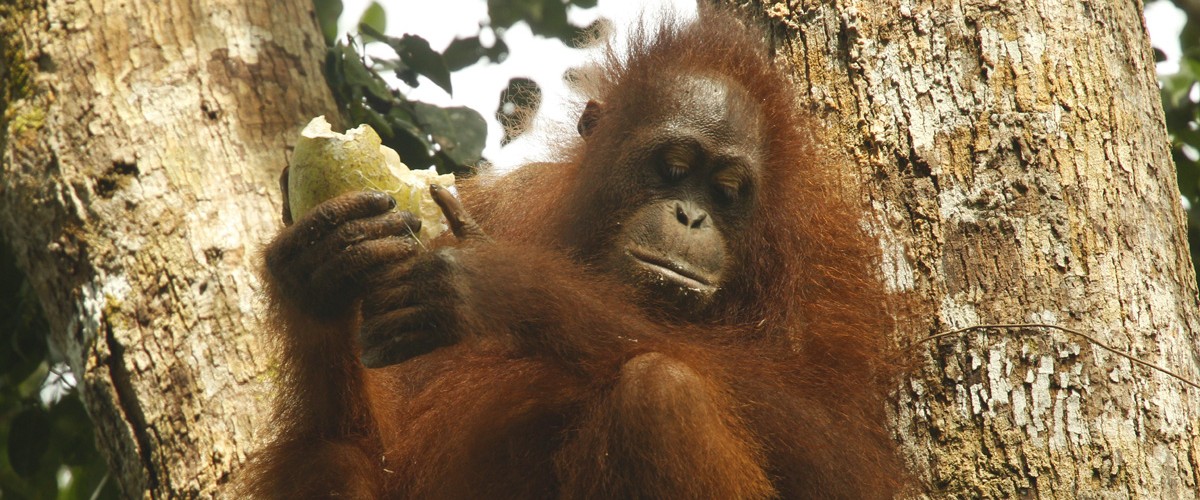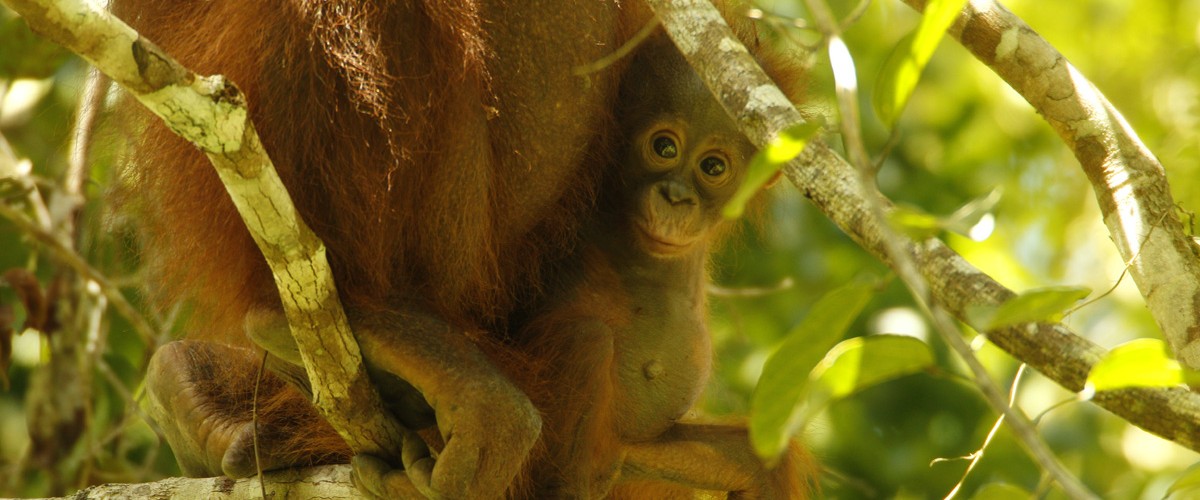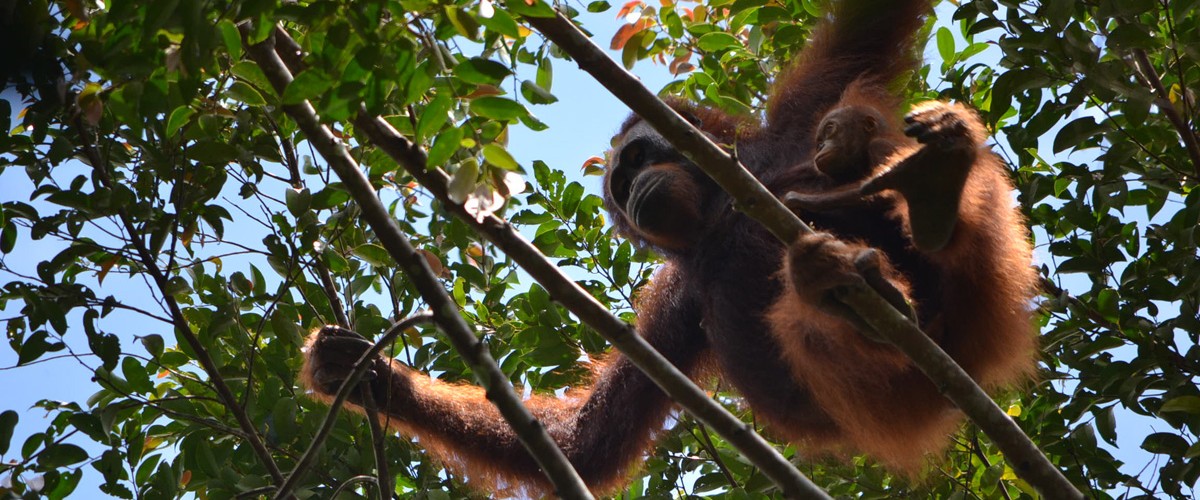By Cheryl Knott, Executive Director
I wake up early, still tired from the 13 km hike into Cabang Panti the day before, but eager to see Walimah and her new baby. It’s been almost four years now since she lost her infant in what we suspect was an infanticidal attack, that also left her severely injured and missing a large chunk of her foot. But, now, finally, after an earlier apparent miscarriage, she has a new baby. As I catch my first glimpse, I can’t help but smile. With eyes encircled by lighter skin, and hair sticking up in a sparse halo, orangutan babies are the epitome of ‘cute’ to the human observer. The baby, now called Winnie, is 2-months-old and has not yet ventured off her mother’s body. For now, that’s her whole world. Winnie tries to grab branches as her mother moves. She plays with leaves and reaches up to her mother’s face with the uncoordinated, comical movements of new baby. As I watch Walimah prepare to move to the next tree, she readjusts little Winnie securely on her side. As Walimah moves through the canopy, I notice subtle changes in the way she moves, preventing the baby from hanging down below her body. It’s a long way to the ground and it’s remarkable that these baby orangutans can hang on! Although even more tiny than human babies, orangutan babies are more physically capable at birth, with a grip that allows them to cling to their mother’s body as she goes about her day, traversing the rainforest canopy.

This new infant gives us an incredible opportunity to document the timing of developmental milestones in wild baby orangutans. To this end, we have expanded some of our ‘baby’ data collection to include more fine-tuned observations of this early period of life. Infant orangutans show an intense interest in what their mother is eating. Starting as early as two months, we see Winnie start to reach out to her mother while she’s eating, seeming to beg for food. Walimah ignores her, as would be expected because her baby does not have any teeth! As little Winnie grows, we will be able to see when Walimah starts sharing food with her (actively or passively allowing her to take a nibble) and whether she is handing off unchewed portions, or the part that she has already chewed. We’ve recently taken a closer look at orangutan food sharing between mothers and babies – something they do rarely. Collective food sharing is a significant difference between humans and other apes, representing one of the important transitions during human evolution. Studying this in orangutans thus tells us not only about how orangutans learn how and what to eat, but also gives us insights into the great expansion of this behavior in our own evolutionary history.

We can expect Walimah to nurse Winnie until she has another offspring – so around 7 years! But, how much milk is she really getting from these nursing bouts? It’s hard to say from just our ground-level observations. So, we’re trying out a couple of new methods to get at this question. First, we are analyzing videos of nursing bouts to measure the suckles per minute which we can use to estimate milk intake and to distinguish between active suckling vs. just passive nipple attachment. With video, we can get an up-close view of nursing something that we just can’t do even with powerful binoculars. Additionally, we can learn about Winnie’s milk intake from her poop! Mother’s milk is, of course, an animal product – containing different levels of carbon and nitrogen than do plant foods. This means that the baby’s poop can be measured for carbon and nitrogen isotopes and compared to these compounds in the poop of her mother, whose diet is almost all plant material. We’ve done this already, with an earlier dataset, and found some promising initial results.
As we study orangutan growth we can’t directly weigh and measure them – so primatologists have to be inventive! One of the ways to do this is to use a laser-mounted camera to project two parallel lasers (human and animal friendly) on the animal and then take a picture. This gives us a known distance, and a digital tape measure, which we can use to measure limb lengths and other body parts. With the help of wildlife photographer Tim Laman, we’ve made improvements on previous laser camera designs, and now have a rugged, cost-efficient, field device. We can now document these changes in wild orangutan growth and can see whether other factors, like changes in food intake, make an impact.

Walimah and her baby are only one of the mother-offspring pairs that we follow as they travel around and through the Cabang Panti study site. We are closely watching, and collecting data, on dyads of many different ages. Together they are painting a picture of the developmental trajectory of juvenile orangutans and what adaptations enable them to (usually) survive during their first vulnerable years. The odds are in Walimah’s favor that her new baby will make it through these first few years. It is OUR job to ensure that this baby – who could well live to be over 50 years old – will have the forest to live out her life’s journey










